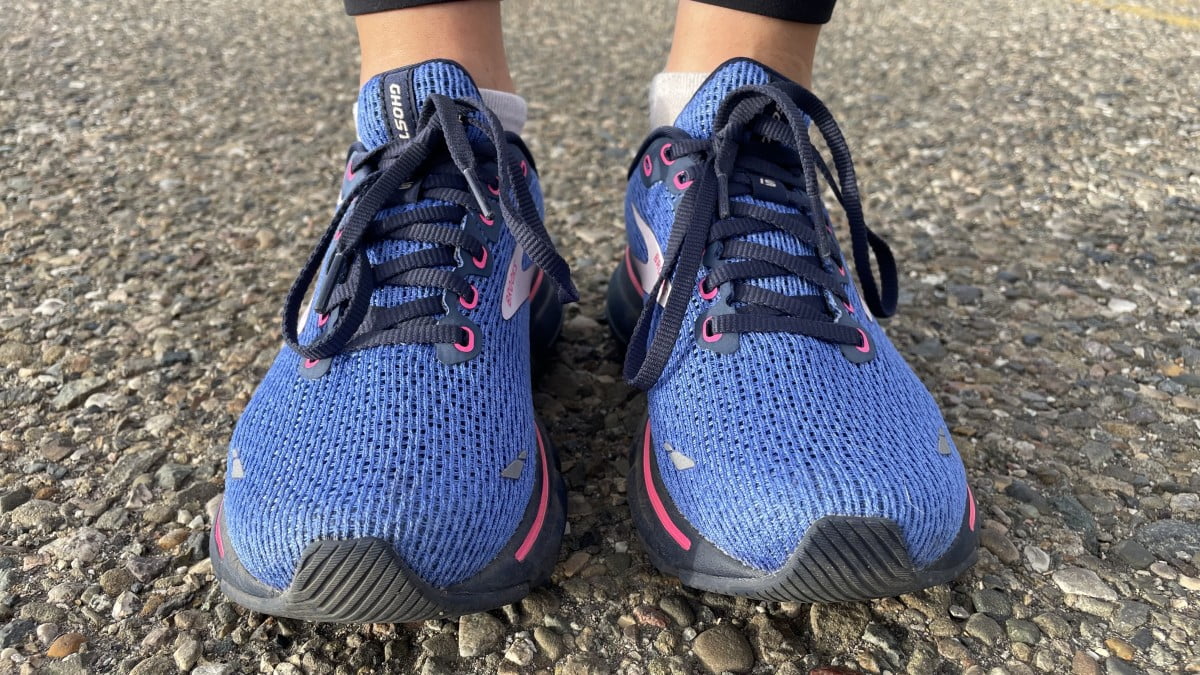When illness strikes, many individuals face the dilemma of whether to continue their training regimen or take a break. Understanding the signals your body sends during this time is essential for making informed decisions that prioritize your health while still considering your fitness goals. This article explores how to recognize common symptoms, the risks of training while sick, and strategies for balancing recovery with your fitness ambitions. By following expert advice and listening to your body, you can navigate this challenging situation effectively and maintain a sustainable approach to health and fitness.
In this article you will find:
Understanding Your Body’s Signals When Sick
When illness strikes, it can be challenging to determine whether to continue your training regimen or take a break. Understanding your body’s signals is crucial for making informed decisions that prioritize your health while balancing your fitness goals. This section delves into the signs your body sends when you’re unwell and how to interpret them effectively.
Recognizing Common Symptoms
Illness can manifest in various ways, and recognizing the symptoms is the first step in understanding what your body needs. Here are some common signs to watch for:
- Fatigue: An overwhelming sense of tiredness can indicate that your body is fighting off an illness. If you feel unusually drained, it may be a sign to rest.
- Fever: A rise in body temperature often signals an infection. Engaging in strenuous exercise while feverish can worsen your condition.
- Muscle Aches: General body aches can indicate that your body is under stress from an illness. Listen to these signals; pushing through the pain can lead to longer recovery times.
- Respiratory Symptoms: Coughing, congestion, or shortness of breath are critical indicators that your body needs time to heal. Training with these symptoms can strain your respiratory system further.
The Importance of the “Neck Rule”
A popular guideline among fitness enthusiasts is the “neck rule.” This rule helps you decide whether to train based on the location of your symptoms:
- Above the Neck: Symptoms like a runny nose, mild sore throat, or sneezing generally indicate that light to moderate exercise may be acceptable. However, listen to your body and avoid pushing too hard.
- Below the Neck: Symptoms such as chest congestion, stomach issues, or fever suggest that rest is the best option. Training while experiencing these symptoms can lead to complications and prolonged recovery.
Listening to Your Body’s Needs
Every individual’s body reacts differently to illness, and understanding your unique signals is essential. Here are a few tips to help you gauge whether you should train:
- Assess Your Energy Levels: If you feel too tired to complete a workout, it’s a sign that your body needs rest.
- Monitor Your Symptoms: Keep track of how your symptoms evolve. If they worsen during or after exercise, it’s a clear indication to stop.
- Consult with a Healthcare Professional: If you’re uncertain about your symptoms, seeking advice from a healthcare provider can offer clarity and guidance tailored to your condition.
Making the Right Choice for Your Health
Ultimately, the decision to train while sick should prioritize your health over your fitness goals. Engaging in exercise when your body needs rest can lead to setbacks in your training and overall well-being. Recognizing and respecting your body’s signals is key to a sustainable fitness journey.
For more insights on how to manage your training during illness, consider exploring resources from reputable health organizations such as the Centers for Disease Control and Prevention.
The Risks of Ignoring Illness During Training
Training while sick might seem like a way to maintain your fitness goals, but it can lead to significant health risks. Ignoring the signals your body sends when you’re unwell can not only prolong your illness but also result in serious complications. This section explores the potential dangers of pushing through sickness during training.
Increased Risk of Complications
One of the most immediate dangers of training while sick is the potential for complications. Engaging in physical activity can exacerbate your symptoms and lead to more severe health issues. Here are some complications that may arise:
- Pneumonia: Exercising with respiratory symptoms can increase your risk of developing pneumonia, especially if you have a cough or congestion.
- Prolonged Recovery Time: Ignoring your body’s need for rest can result in a longer recovery period, delaying your return to full health and fitness.
- Exacerbation of Chronic Conditions: For individuals with pre-existing conditions, such as asthma or heart disease, training while sick can trigger flare-ups and worsen their overall health.
Impact on Immune Function
Regular exercise is known to boost the immune system, but excessive training during illness can have the opposite effect. Here’s how:
- Immune Suppression: Intense workouts can lead to temporary immune suppression, making it harder for your body to fight off infections.
- Increased Cortisol Levels: Stress from training while sick can elevate cortisol levels, which may further weaken immune responses and prolong illness.
Psychological Effects of Ignoring Illness
Training while sick can also have psychological repercussions. Athletes and fitness enthusiasts often feel pressure to maintain their training schedules, but ignoring illness can lead to:
- Burnout: Pushing through sickness can lead to physical and mental burnout, reducing motivation and enjoyment in fitness activities.
- Guilt and Anxiety: Feeling guilty about missing workouts can create anxiety, which may further hinder recovery and overall well-being.
Long-Term Health Consequences
In some cases, the risks of ignoring illness can extend beyond the immediate effects. Long-term consequences may include:
- Chronic Fatigue Syndrome: Overexerting yourself during illness can lead to chronic fatigue, significantly impacting your quality of life.
- Reduced Performance: Consistent training during illness can lead to diminished performance levels, making it harder to achieve fitness goals in the long run.
For those considering training while sick, it is crucial to weigh these risks carefully. Understanding the potential consequences can help you make more informed decisions that prioritize your health. For further reading on the importance of listening to your body, check out resources from the Mayo Clinic.
Finding Balance Between Recovery and Fitness Goals
Striking the right balance between recovery and fitness goals is essential for long-term health and performance. When illness strikes, it can be challenging to navigate this balance, as the desire to maintain fitness often conflicts with the body’s need for rest and recovery. This section explores strategies for finding that equilibrium and ensuring a sustainable approach to health and fitness.
Understanding the Importance of Recovery
Recovery is not just a passive process; it is a critical component of any fitness regimen. When your body is ill, recovery becomes even more vital. Here’s why:
- Physical Repair: During recovery, the body repairs tissues, builds muscle, and strengthens the immune system. Ignoring recovery can hinder these processes and lead to prolonged illness.
- Mental Rejuvenation: Taking time to recover allows for mental clarity and motivation to return, preventing burnout and fatigue from overtraining.
Setting Realistic Fitness Goals
When you’re recovering from an illness, it’s crucial to adjust your fitness goals to reflect your current capabilities. Here are some tips for setting realistic goals:
- Short-Term Goals: Focus on achievable short-term goals that prioritize health over performance, such as daily walking or gentle stretching.
- Progressive Overload: Once you feel better, gradually increase the intensity and duration of your workouts. This approach helps prevent setbacks and ensures a smooth transition back to your regular routine.
Incorporating Active Recovery
Active recovery can be an effective way to maintain fitness while allowing your body to heal. Here are some activities to consider:
- Low-Intensity Cardio: Activities like walking, cycling, or swimming at a low intensity can promote circulation without overtaxing your body.
- Gentle Stretching or Yoga: These practices can enhance flexibility and relaxation, aiding in recovery without exerting excessive effort.
Listening to Your Body
One of the most important aspects of balancing recovery and fitness goals is learning to listen to your body. Here are some strategies to enhance your body awareness:
- Daily Check-Ins: Take a moment each day to assess how you feel physically and mentally. This practice can help you recognize when you need to push yourself or when it’s time to rest.
- Journaling: Keeping a fitness and health journal can help track your symptoms, energy levels, and workouts, allowing you to identify patterns and adjust accordingly.
Consulting Professionals
When in doubt, seeking advice from fitness and health professionals can provide valuable insights tailored to your situation. Consider consulting:
- Personal Trainers: They can help design a modified workout plan that accommodates your recovery while still challenging you appropriately.
- Healthcare Providers: Medical professionals can offer guidance on when it’s safe to resume training based on your specific health condition.
For more information on recovery strategies and their importance, visit Healthline, which provides valuable insights into recovery practices that support overall health.
Expert Advice on Training Safely While Unwell
When faced with illness, the decision to train can be daunting. To ensure safety and promote recovery, it’s essential to follow expert advice tailored for those navigating fitness during sickness. This section compiles insights from health professionals and fitness experts on how to train safely while unwell, emphasizing the importance of listening to your body and making informed choices.
Consult Healthcare Professionals
Before resuming any training regimen while feeling unwell, consulting with a healthcare provider is crucial. They can assess your condition and offer personalized recommendations. Here’s what to consider:
- Medical Evaluation: A thorough evaluation can help identify the severity of your illness and determine if it’s safe to engage in physical activity.
- Tailored Guidance: Healthcare professionals can provide advice based on your specific symptoms and medical history, ensuring a safe approach to training.
Modify Your Training Plan
Experts suggest modifying your training plan rather than completely halting activity. Here are some strategies to adapt your workouts:
- Lower Intensity: Focus on low-intensity exercises such as walking or gentle yoga, which can help maintain your fitness without overexerting your body.
- Shorter Duration: Reduce the length of your workouts. Short, focused sessions can be more manageable while you recover.
- Focus on Mobility: Incorporate flexibility and mobility exercises to keep your body active without straining it.
Stay Hydrated and Nourished
Proper hydration and nutrition are vital for recovery and safe training. Here’s how to ensure you’re supporting your body adequately:
- Hydration: Drink plenty of fluids to stay hydrated, as illness can lead to dehydration. Water, herbal teas, and broths are excellent options.
- Nutrient-Dense Foods: Consume a balanced diet rich in vitamins and minerals to support your immune system. Foods like fruits, vegetables, lean proteins, and whole grains are beneficial.
Listen to Your Body
One of the most critical pieces of advice from experts is to listen to your body. Here are some ways to tune into your physical signals:
- Monitor Symptoms: Keep track of how your body responds to exercise. If symptoms worsen, it’s essential to stop and reassess.
- Rest When Needed: Don’t hesitate to take breaks. Rest is a crucial part of the recovery process and can help prevent further complications.
Gradual Return to Regular Training
Once you begin to feel better, a gradual return to your regular training routine is essential. Experts recommend:
- Gradual Increase: Slowly increase the intensity and duration of your workouts. This approach helps your body adjust without overwhelming it.
- Set Realistic Goals: Focus on achievable goals that prioritize health over performance as you transition back to regular training.
For more expert insights on training safely while unwell, consider visiting ACE Fitness, which offers valuable resources on fitness and health management. When deciding whether to train while sick, it’s crucial to recognize your body’s signals and prioritize health over fitness goals. Common symptoms like fatigue, fever, and respiratory issues indicate a need for rest. The “neck rule” can help determine if light exercise is acceptable, but if symptoms are below the neck, it’s best to avoid training altogether. Listening to your body and consulting healthcare professionals can guide you in making informed choices.
Training while unwell can lead to significant health risks, including complications like pneumonia and prolonged recovery times. To maintain fitness during recovery, consider modifying your training plan with lower intensity exercises and focusing on active recovery methods. Ensure proper hydration and nutrition to support your immune system, and gradually increase workout intensity as you feel better. For further guidance, consult reputable health resources such as the CDC or ACE Fitness.




